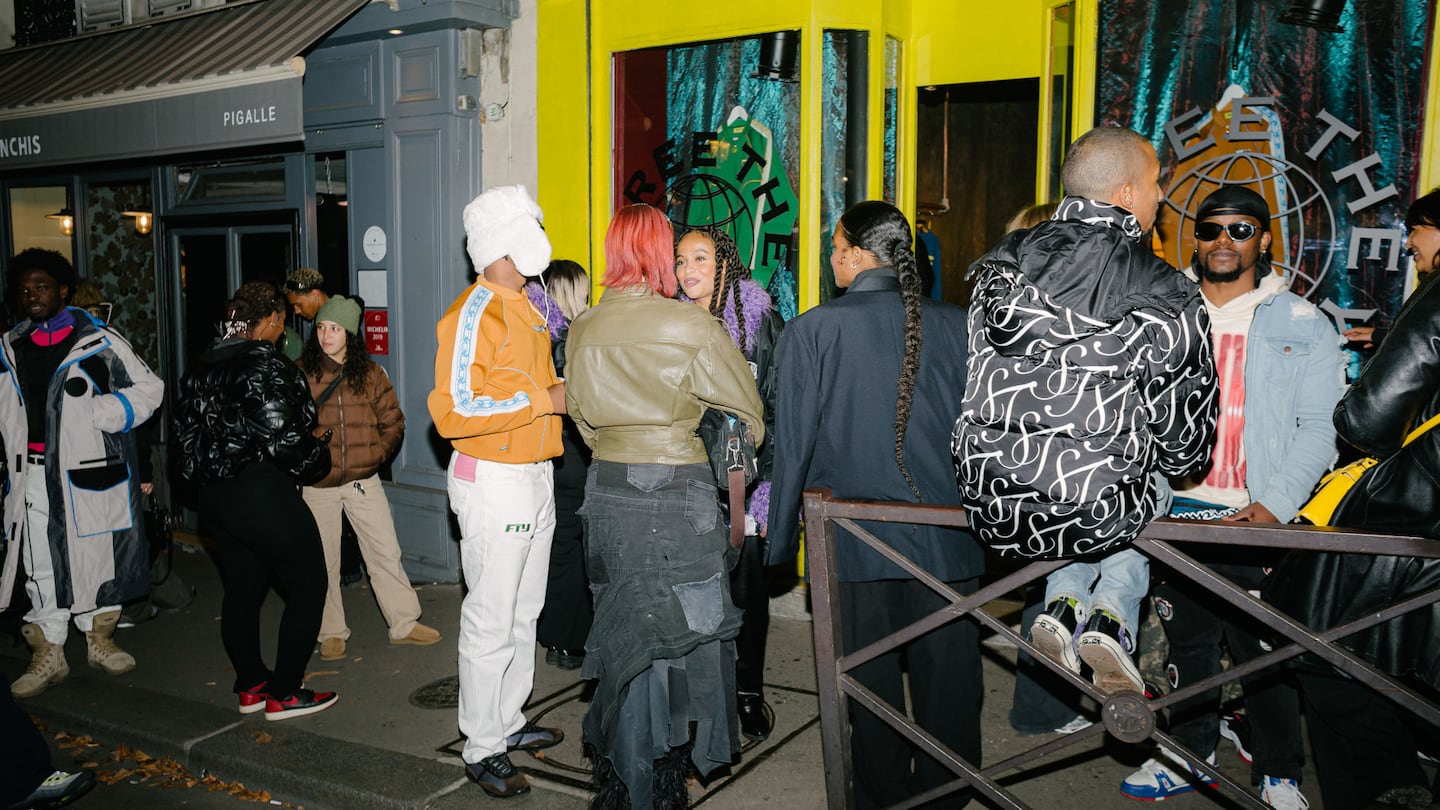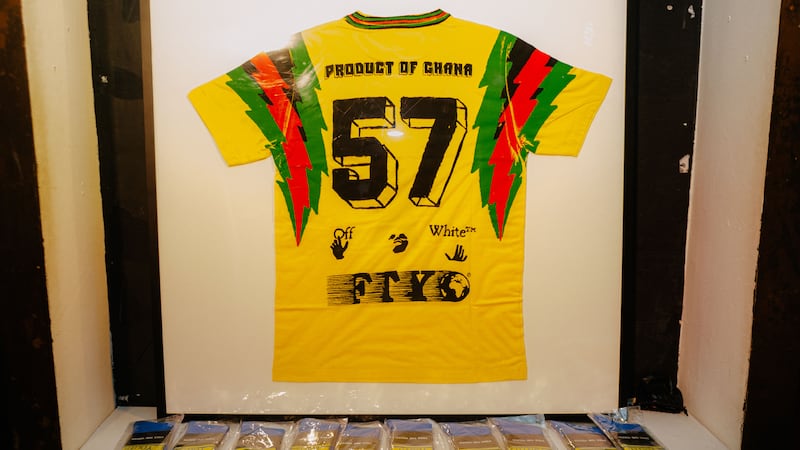
The Business of Fashion
Agenda-setting intelligence, analysis and advice for the global fashion community.

Agenda-setting intelligence, analysis and advice for the global fashion community.

Luxury is over its streetwear obsession.
This season, sneakers and hoodies rarely graced the fashion week shows of megabrands in Milan and Paris as they did in previous years, while luxury-streetwear tie-ups such as Air Jordan and Dior or Supreme and Louis Vuitton have become less frequent.
Balenciaga, which under creative director Demna made hoodies and chunky sneakers luxury essentials, has since widened its focus to couture and red carpet dressing. Off-White, too, has recently pursued a style closer to traditional luxury than streetwear, incorporating tailored suiting and launching an haute couture line. Boots and loafers far outnumbered sneakers during the label’s Spring/Summer show in Paris on Thursday, its first under the artistic direction of Ib Kamara.
There’s a reason so many brands are pivoting. After dominating fashion for the better part of the last decade, streetwear is finally falling out of style. It’s partly down to the natural ebb and flow of fashion trends: retailers note that hoodies and sneakers, while still popular, now face competition from loafers and oxford shirts as the menswear silhouette evolves in a more preppy direction. (Men currently make up the majority of streetwear consumers.)
ADVERTISEMENT
Meanwhile, many consumers see pure streetwear brands as having become overly commercialised and having lost connection with their roots in 1980s street culture, hip-hop and skateboarding.
“Streetwear has switched from being what people on the street are wearing, as an organic thing, to what big corporations are telling them to wear,” said writer Derek Guy.
But just like the skinny jean, another seemingly immortal trend that was recently knocked off its perch, hoodies and sneakers aren’t going away any time soon. These items have been absorbed into brands’ offerings — Bernstein analysis in July noted that sneakers continue to “dominate men’s footwear.” Streetwear’s deep cultural history too means it will always have a place in fashion: menswear brands like Aimé Leon Dore and Noah that combine tailored looks with cargo pants, casual shirting and workwear are heavily influenced by streetwear without falling neatly into that category.
And there are still plenty of die-hard fans of 2010s-era streetwear. Supreme, under parent company VF Corp., is expected to generate $600 million in revenue in 2022, up from $500 million last year. Supreme remains the number one traded brand for apparel on StockX since 2020, according to the resale platform.
There’s also a new generation of independent brands like London-based Corteiz, Dutch label Daily Paper, Ghanaian brand Free The Youth and Nigerian skate collective Motherlan that have found success by harkening back to the original paradigm of streetwear: align with niche communities and their values, and rely on them as the first and most passionate ambassadors of the brand.
To put it another way, streetwear isn’t dead, it’s evolved.
“In menswear especially, it’s now more about people wanting to pair tailored trousers or a polo with a pair of sneakers, rather than a whole streetwear ‘fit,’” menswear consultant and Twitter pundit Chris Black told BoF in July.
Streetwear emerged out of powerful cultural movements in the New York City hip-hop scene and the skate crews of Los Angeles. Rappers like Lil Kim and Biggie Smalls pioneered early streetwear staples like bucket hats and baggy tracksuits. In the 1990s and early 2000s, this particular style was commercialised by designers like Daymond John of FUBU, James Jebbia of Supreme, Shawn Stussy, and by Nigo and Hiroshi Fujiwara in Japan, where a vibrant scene grew out of Tokyo’s Harajuku district.
ADVERTISEMENT
It wasn’t until the 2010s that streetwear began to infiltrate the world of luxury fashion. One watershed moment was captured in a now-famous image of Ye (the artist and designer formerly known as Kanye West) and Virgil Abloh outside the Comme des Garçons showroom during Paris Fashion Week in 2009, posing in eye-catching — and at first, heavily ridiculed — streetwear looks.
In 2013, Abloh founded Off-White, an evolution of his previous label, Pyrex Vision. Off-White went on to become one of fashion’s most in-demand brands, and embarked on high-profile collaborations with Moncler, Nike and countless others. Abloh popularised his trademark quotation marks — Jordan sneakers with “AIR” printed on the midsole — a gentle ironic knock at the conventions of the fashion industry.
Five years later, Louis Vuitton would go on to hire Abloh — a self-proclaimed fashion outsider — as its artistic director for menswear. In 2019, Dior collaborated with Nike’s Jordan brand, a capsule inspired by rapper Travis Scott. Last year, LVMH took a 60 percent stake in the trademark of Abloh’s Off-White.
But luxury’s newfound love of streetwear had a limited shelf life. The cyclical nature of fashion and the persistent demand for newness meant that hoodies, puffer jackets and sneakers couldn’t stay in style forever. Collaborations between luxury and streetwear brands also began to lose their novelty as they became more common. Abloh’s death may have marked the end of an era: Off-White, which for years reliably topped Lyst’s index of the most-searched brands on its platform, fell to 19th in the July edition.
“This shift away from streetwear came about because many [luxury] brands and designers rushed to the streetwear space, therefore diluting its authenticity,” said Chris Kyvetos, menswear buying director at Mytheresa.
Culturally, the current streetwear market is now back to being dominated by small but influential brands. Much like Abloh nearly a decade ago, these labels’ big online fan bases, who reliably turn out in person for drops too, allow them to attract collaborations with bigger players. Last month, Daily Paper partnered with Adidas to design a playing kit for Dutch football team Ajax, while UK-based sneaker start-up Clints partnered with Patta to introduce its latest shoe, earlier this year. Free The Youth has collaborated with Off-White and Jordan on limited edition products and community initiatives.

“These smaller brands are successful because regardless of the product, you can guarantee they have highly engaged audiences who will buy into whatever they are selling,” said Black.
Atlanta-based streetwear boutique A Ma Maniere has become another coveted collaborator. It is regularly tapped by Nike’s Jordan brand for collaborations and product launches, and co-designed a capsule collection with Lanvin in January that featured tailored tracksuits, fleece hoodies and sneakers.
ADVERTISEMENT
“Streetwear is still a very in-demand category for Gen-Z consumers … it definitely has become more democratised with far more options [brands] now,” said Joe Wilkinson, co-founder and chief executive of Heat, a mystery box retailer which has sold over 30,000 boxes containing clothing and footwear from brands like Heron Preston, Palm Angels, Balenciaga and Off-White since the company launched in 2019.
Meanwhile, new brands are still finding success in the classic streetwear playbook of selling logo-heavy merch — which can range from one-off graphic tees to random branded objects like trucker hats, tote bags or skateboards — related to a niche interest group or subject matter before reaching a wider range of consumers.
Patta and Daily Paper began as a cult sneaker store and a style-culture blog, respectively, before branching out into apparel production. These brands also use a scarcity-driven drop model before flooding the market when demand peaks.
These brands reflect streetwear’s irreverence to fashion — creatives without formal design training selling their merch and clothing directly to their fans, operating outside the industry’s confines.
Corteiz, which launched in 2017, is recognisable on the streets of London and beyond by its Alcatraz logo — resembling the outline of the former prison island in San Francisco Bay. It has rapidly gained attention over the last two years, with high-profile retail pop-ups and influential fans like British rapper Stormzy and Abloh, who wore the brand’s logo-emblazoned socks to the Met Gala in 2021.
This new phase of streetwear is being fuelled by the growing cultural power of start-ups that speak to specific communities and are able to sustain themselves through their global online audiences, said Jian DeLeon, Nordstrom men’s fashion and editorial director.
Corteiz’s media-shy founder, Clint, is outspoken as to his label’s principles: “no free clothes to shit influencers, no paid insta ads [sic], no magazines, no asslicking, no big brand collabs,” he wrote in an Instagram story earlier this year. The brand continues to grow its audience by promoting its niche west London identity, the uncompromising, anti-establishment aesthetic of which appeals far beyond its local community.
Displaying the brand’s now global appeal, Clint turned up unannounced in Melbourne, Australia, last week and sent hundreds of young people rushing to the location for a chance to get their hands on Corteiz’s “Down Unda” merch.
It’s too soon to say whether any of these emerging brands will be the next Off-White or Supreme, or if they will remain relatively niche as streetwear’s moment as a dominant force in mainstream fashion is receding, for now.
“Streetwear has died more than a thousand deaths at this point, which to me demonstrates more of a misunderstanding of what it is than anything,” said DeLeon. “It is clothing inspired and created by specific communities with shared codes and value systems, largely influenced by counterculture and subculture.”
From casualisation to the decline of streetwear, BoF unpacks what’s driving the “unprecedented” boom in the men’s market.
Signs of streetwear’s importance to the luxury business model were everywhere this week, from Virgil Abloh’s last collection for Louis Vuitton to LVMH’s Aimé Leon Dore deal to Bally’s appointment of Rhuigi Villaseñor.
Hoodies, sneakers and graphic T-shirts may have peaked as high fashion trends, but the movement’s wider influence is far from over.

Daniel-Yaw Miller is Senior Editorial Associate at The Business of Fashion. He is based in London and covers menswear, streetwear and sport.
Designer brands including Gucci and Anya Hindmarch have been left millions of pounds out of pocket and some customers will not get refunds after the online fashion site collapsed owing more than £210m last month.
Antitrust enforcers said Tapestry’s acquisition of Capri would raise prices on handbags and accessories in the affordable luxury sector, harming consumers.
As a push to maximise sales of its popular Samba model starts to weigh on its desirability, the German sportswear giant is betting on other retro sneaker styles to tap surging demand for the 1980s ‘Terrace’ look. But fashion cycles come and go, cautions Andrea Felsted.
The rental platform saw its stock soar last week after predicting it would hit a key profitability metric this year. A new marketing push and more robust inventory are the key to unlocking elusive growth, CEO Jenn Hyman tells BoF.